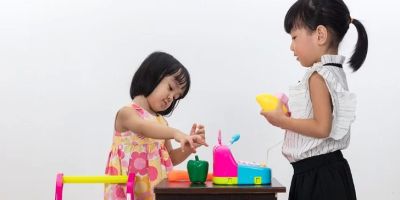How to Keep Your Child’s Toys Tidy and Organized: A Parent’s Guide
As parents, we know the struggle of keeping our homes tidy, especially when it comes to our children’s toys. From stuffed animals to action figures and building blocks, it can seem impossible to keep everything in order. However, with a little planning and the right organizational strategies, you can maintain a clutter-free environment while still allowing your child to enjoy their favorite toys. In this guide, we’ll explore effective tips for organizing your child’s toys, ensuring they stay neat, accessible, and ready for play.
1. The Importance of Toy Organization
At first glance, organizing toys might seem like a simple task, but it’s actually a vital part of maintaining a harmonious home. Disorganized toys can not only make a space look chaotic, but they can also create stress for both parents and children. By organizing your child’s toys, you provide them with a sense of order and responsibility. This helps foster a more productive and calm atmosphere, where children can learn to take care of their belongings and be more independent.
Moreover, organizing toys can also improve playtime itself. When children can easily find and access their toys, they are more likely to engage in meaningful play, which can promote creativity and learning. Organized spaces also help children stay focused and avoid distractions, allowing them to enjoy their toys without getting overwhelmed by clutter.
2. Choosing the Right Storage Solutions
One of the first steps in organizing your child’s toys is selecting appropriate storage solutions. The right containers and furniture can make a significant difference in maintaining a tidy space. Here are a few tips to consider:
- Bins and Baskets: Bins are one of the most versatile storage solutions for toys. They come in various sizes and can be stacked for easy access. Choose clear plastic bins so you can see the contents or label them for better organization.
- Storage Cubbies: Cubbies are ideal for organizing toys of different sizes. They allow for easy access and can be used to separate toys by type (e.g., dolls, cars, building blocks). They can also double as decorative pieces in your child's room.
- Toy Chests: If you're looking for a larger storage option, a toy chest or a trunk can be a great choice. These are particularly useful for bigger toys like stuffed animals or large action figures. Just make sure to choose one with a safety feature to prevent it from closing too quickly on little fingers.
- Wall Shelves: Wall-mounted shelves are perfect for storing smaller toys and keeping them off the floor. They help save space while making toys easily accessible. Opt for shelves with safety brackets to ensure they are securely mounted.
3. Sorting Toys by Category
When organizing toys, it’s helpful to sort them into categories. This makes it easier for both you and your child to find what you need, and it can encourage children to take ownership of their toys. You can categorize toys based on type, size, or frequency of use. Here are some common categories:
- Building Toys: Toys like Lego sets, blocks, and construction kits can be grouped together. These can be stored in a labeled bin or a stacking container.
- Stuffed Animals: If your child has a large collection of plush toys, consider storing them in a separate bin or a hanging storage net. This keeps them off the floor and organized while still being easy to access.
- Arts and Crafts Supplies: If your child loves crafting, designate a space for art supplies like crayons, markers, and paper. A small drawer unit or a dedicated art box can help keep these items neatly arranged.
- Action Figures and Dolls: These small toys can easily be lost or scattered around. Store them in small bins or trays that can be easily accessed and organized by their character or theme.
4. Encouraging Kids to Clean Up
One of the biggest challenges in keeping toys organized is getting your child to help with the cleanup. Children may not always understand the importance of tidying up, so it’s essential to encourage good habits from an early age. Here are a few ways to motivate your child to keep their toys tidy:
- Make it Fun: Turn cleaning up into a game. You can race against the clock or play a fun song while tidying up. Children are more likely to enjoy cleaning up when it feels like a fun activity.
- Use Reward Systems: Positive reinforcement can go a long way. Create a reward system where your child earns stars or stickers for helping to clean up. After earning a certain number, they can trade them in for a small reward or treat.
- Incorporate Cleaning Into Their Routine: Make cleaning up part of your child’s daily routine. For instance, before bedtime, encourage your child to spend five minutes putting away their toys. Consistency will help establish this habit.
- Lead by Example: Children are more likely to follow your lead. Show them how you organize and tidy up your things, and they’ll be more inclined to follow suit.
5. Creating Designated Play and Storage Areas
Another key strategy for keeping your child’s toys organized is to create clear zones for both play and storage. This can be particularly useful in small spaces where everything needs to have its place. By designating areas for specific activities, you can keep the clutter contained and ensure that toys are used in an organized manner.
For example, you could create a play zone in the living room or playroom, with clearly marked storage containers for different toy types. When your child finishes playing, they know exactly where to put each item. Additionally, having a specific storage area for toys keeps them from spreading throughout the house and becoming a tripping hazard.
6. Maintaining Organized Toys Over Time
Keeping toys tidy and organized isn’t a one-time task. Over time, children accumulate new toys, and some old ones may be forgotten or broken. To maintain an organized system, it’s important to regularly assess your child’s toy collection and remove items that are no longer used or needed.
Schedule periodic toy purges—every few months or at the start of a new season—where you go through the toys together and decide which ones to donate or discard. This not only helps keep the collection manageable but also teaches your child the importance of letting go of things they no longer need.
Additionally, consider rotating toys to keep things fresh. Instead of keeping all toys accessible at all times, store some away for a period and then switch them out. This helps reduce the feeling of toy overload and keeps the excitement of playtime alive.
By following these tips and maintaining a consistent routine, you can create an organized and enjoyable environment for both you and your child. With the right systems in place, your child will learn the importance of organization while still having fun with their favorite toys!
SEO Title: How to Keep Your Child’s Toys Tidy and Organized: Expert Tips SEO Keywords: keep toys tidy, toy organization, organize children’s toys, toy storage, organizing kids toys SEO Description: Learn effective ways to keep your child’s toys tidy and organized. From choosing storage solutions to encouraging kids to clean up, discover expert tips for managing toy clutter.




